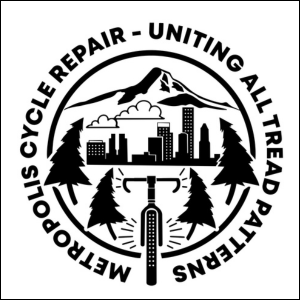
The events of this past weekend require me to make a point I’ve long understood about streets: safety is as much about culture as it is about concrete. If Portland truly stands for streets where everyone can feel safe and welcome, we must do more to defend them against dangerous people — whether the weapon is a multi-ton steel vehicle or a fist, or a gun.
Allowing violent extremists hell-bent on fighting and hurting others to roam our streets without any resistance is no different than allowing an 80 mph speed limit on a wide arterial adjacent to homes, parks and schools. Armed individuals who use neighborhood streets as a backdrop for their pointless violent games are the human equivalent of huge SUVs and trucks driven by distracted drivers or illegal street racers that pose an imminent threat to our city.
Portland Bureau of Transportation Commissioner Jo Ann Hardesty is away on vacation this week and was not around to see how this past weekend’s latest left-wing/right-wing tussle unfolded. Even so, facing pressure from her constituents to make a statement, Hardesty tweeted that she was, “disgusted by the actions”.
Hardesty is a well-known critic of the Portland Police Bureau, but her impact on that agency is limited because it’s not in her portfolio. PBOT is. And the connection between a transportation bureau and hate-free streets is much stronger than you think.
Advertisement
In fact, PBOT’s 2019-2022 Strategic Plan includes an entire section on the topic. Goal 1 of the plan is to tie street safety to racial and social equity. Here’s the text (emphasis mine):
Goal 1: Make Portland streets safe for everyone
How does making Portland streets safe for everyone advance equity? Addressing hate in streets. Safe spaces mean different things in different neighborhoods. Our public streets and sidewalks belong to everyone and should be safe and welcoming for everyone. This begins with treating each other well and combating hate in our public spaces. How people experience safety and inclusion in our streets is fundamental to every decision they make.
That seems like a policy commitment tailor-made to address the type of violence and aggression innocent Portlanders were subjected to this past weekend.
I realize plans (and policies for that matter) have a way of gathering dust in this town, and words are just that: words. But Hardesty holds the key to turning these words into action: Her partner on crime, Dr. Jonathan Jay, an expert on urban health from the Boston University School of Public Health.
You might recall that Hardesty held web panel with Dr. Jay in October 2020 as part of her Rethink Portland initiative and in an interview with BikePortland a few months later she credited Dr. Jay for helping her understand how we can maintain public safety and still reduce the police budget.
And guess who was in Portland earlier this month, just 10 days before the Proud Boys and anti-fascists squared off in east Portland? Yep. None other than Dr. Jay.
As you might have read in the Willamette Week a few days ago, Jay was hired by the City of Portland to help tackle our violent crime problem. The man who brought Dr. Jay to Portland is newly-hired Community Safety Transition Director Mike Myers.
Myers understands there are direct link between the built environment and how people behave in cars and toward each other. “There are consistencies in where fire deaths occur, where gun violence occurs, and where pedestrians are getting hit,” he told the Willamette Week.
And when asked by Willamette Week what he remembered most during his two-day visit in east Portland, Dr. Jay replied, “The neighborhoods seem to be designed more for cars than for people. And there’s a lot of people who live there.” Nailed it.
We can use PBOT to take back our streets with more carfree spaces, more concrete diverters, more space for non-drivers, more painted intersections, more public plazas, and so on. If we get more law-abiding folks outside, taking up space on our streets, it will leave less space for folks who don’t care about the law (or each other).
Better street designs and high-quality public spaces alone will not prevent these violent clashes. But if a certain city commissioner is frustrated by not having power over the bureau that manages our laws, now would be a good time to channel that energy into the one that manages our streets.

